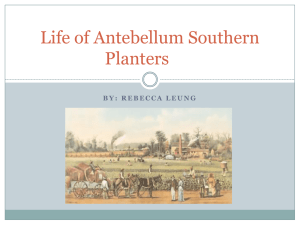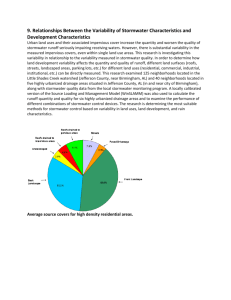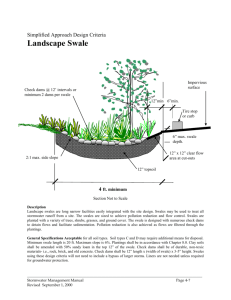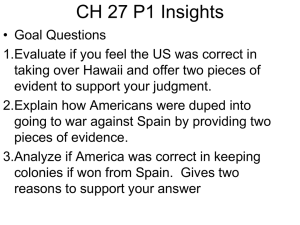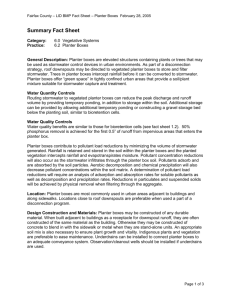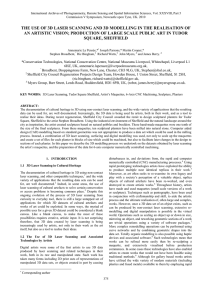Flow-through Planter
advertisement
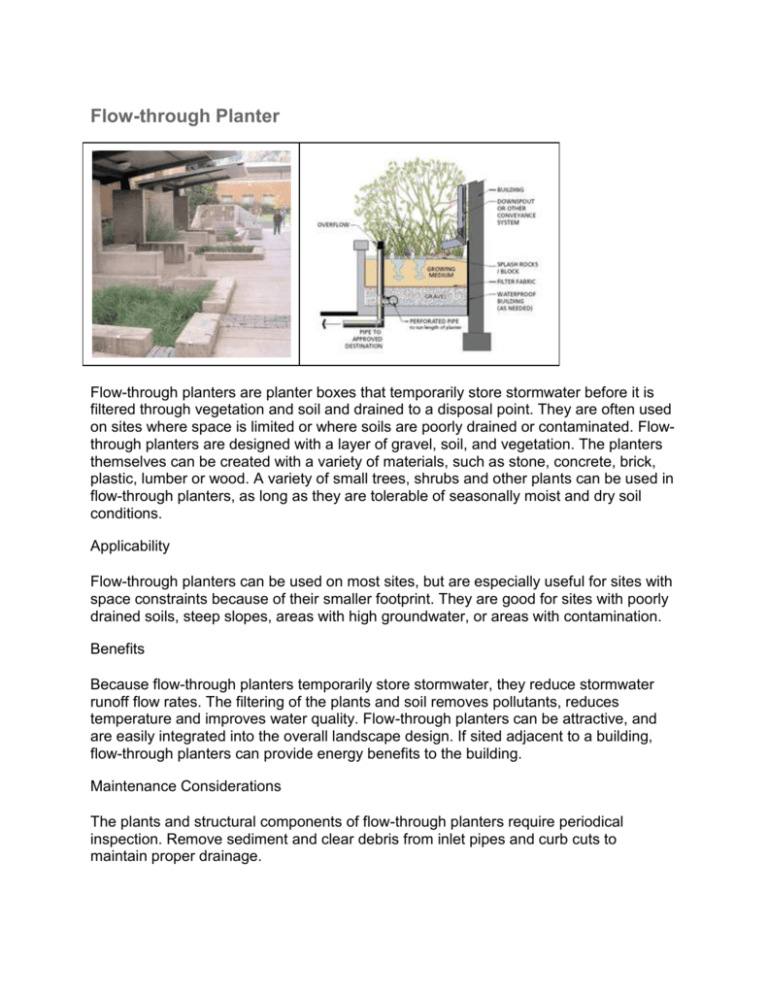
Flow-through Planter Flow-through planters are planter boxes that temporarily store stormwater before it is filtered through vegetation and soil and drained to a disposal point. They are often used on sites where space is limited or where soils are poorly drained or contaminated. Flowthrough planters are designed with a layer of gravel, soil, and vegetation. The planters themselves can be created with a variety of materials, such as stone, concrete, brick, plastic, lumber or wood. A variety of small trees, shrubs and other plants can be used in flow-through planters, as long as they are tolerable of seasonally moist and dry soil conditions. Applicability Flow-through planters can be used on most sites, but are especially useful for sites with space constraints because of their smaller footprint. They are good for sites with poorly drained soils, steep slopes, areas with high groundwater, or areas with contamination. Benefits Because flow-through planters temporarily store stormwater, they reduce stormwater runoff flow rates. The filtering of the plants and soil removes pollutants, reduces temperature and improves water quality. Flow-through planters can be attractive, and are easily integrated into the overall landscape design. If sited adjacent to a building, flow-through planters can provide energy benefits to the building. Maintenance Considerations The plants and structural components of flow-through planters require periodical inspection. Remove sediment and clear debris from inlet pipes and curb cuts to maintain proper drainage. Cost Considerations Costs vary depending on size and materials. Flow-through planters are generally more expensive to construct than simpler stormwater infiltration facilities, but they occupy less space on the site. However, for new construction, their cost is comparable or less expensive than conventional stormwater systems. Safety and Siting Requirements Flow-through planters can be located adjacent to a building foundation because they do not infiltrate the stormwater Incorporate an overflow to drain to a proper destination or disposal point CONTAINED PLANTERS (contained planter boxes) A contained planter is filled with soil and plants that accept precipitation only, not stormwater runoff from another source. It is placed above ground on an impervious surface. Rainwater is temporarily stored above the soil, and then filters down through the planter. In some cases, weep holes provide drainage through the bottom of the planter onto the impervious surface. Contained planter boxes can be prefabricated pots or constructed in place. They come in all shapes and sizes, are made of stone, concrete, brick, plastic lumber or wood, and can hold a variety of plants. Benefits A contained planter reduces impervious area and stormwater runoff. Contained planters are simple, cost-effective, and visually appealing. They can be placed on many types of flat impervious surfaces, such as sidewalks, plazas, and rooftops. Vegetation Planters can contain small trees, shrubs, flowers, bulbs, and groundcovers. Trees are especially recommended because they provide canopy cover for impervious surfaces not covered by the planter. Self-sustaining plants that do not require additional fertilizers or pesticides are recommended. Maintenance Contained planters require minimal maintenance. Check them periodically to maintain adequate drainage. They are likely to need summer watering and weeding. Potted plants require more water than the same plants growing in the ground. Cost The cost of contained planter boxes varies, depending on the size and materials. Safety and Siting Requirements • Locate planters on virtually any impervious surface. They can be any shape or size, as site requirements, budget and maintenance dictates.
